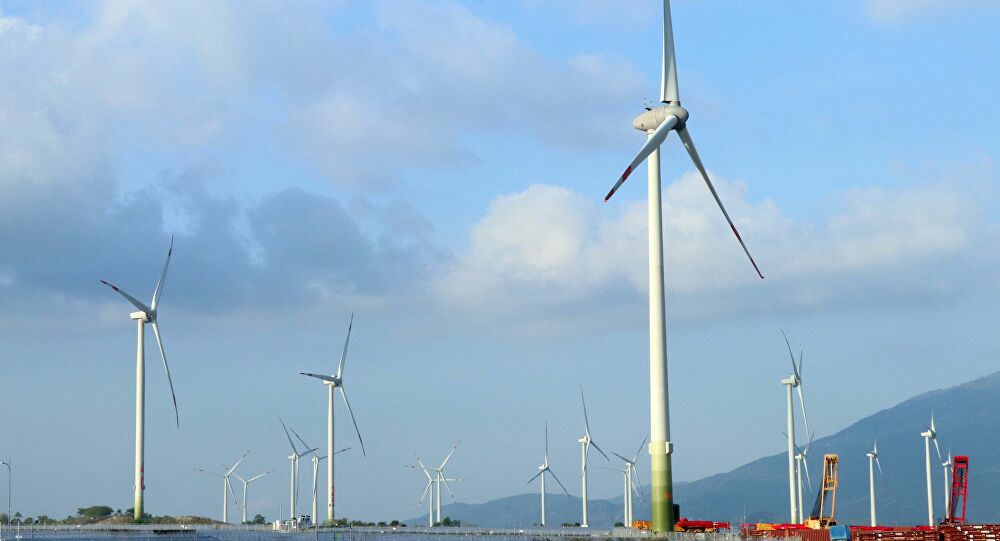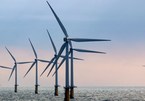Offshore wind is projected to supply between 5% and 12% of Vietnam’s electricity needs by 2035 in two possible growth scenarios built by the World Bank (WB).
It’s equivalent to 11 GW and 25 GW by 2035 in the low and high growth scenarios, respectively, the WB said in a recent report titled “Offshore Wind Roadmap for Vietnam.”
 |
|
An offshore wind project in central Vietnam. Photo: Cong Thu/VNA
|
Both the low and high growth scenarios require similar enabling actions but the latter requires earlier action, WB said, adding that the headline impacts of these two growth scenarios include key metrics of electricity generation, cost, economic, and emissions.
The high growth, by replacing coal-fired generation, could help to avoid over 200 million metric tons of CO2 emissions and add at least US$50 billion to Vietnam’s economy by stimulating the growth of a strong supply chain, creating thousands of skilled jobs, and exporting to other offshore wind markets globally.
In addition, both the scenarios could deliver substantial benefits to Vietnam, however, results indicate that the high one could bring much larger economic benefits for a lower overall cost.
Notably, the vision to 2050 is set to mark the volume of 35 GW and 70 GW for the low and high growth scenarios, respectively, generating up to 30% of the country’s electricity by the year.
Meaning of the roadmap
The roadmap suggests that the existing regulations, legislation, processes, and infrastructure need to be improved or developed to deliver the vision that is eventually set by the Government of Vietnam.
This roadmap provides a series of recommended next steps to help create the conditions for establishing and growing the industry.
Accordingly, it begins with setting a vision in the Power Development Plan VIII (PDP8). Specifically, the roadmap starts in 2021 by setting the 2030-2035 targets and vision to 2050. In 2021-2022, it creates the processes with marine spatial plan, leasing, permitting, power purchase, and supply chain development. Between 2022 and 2035, it focuses on developing infrastructure namely transmission networks, ports, and supply chains.
Among the steps and issues for the long-run development, the roadmap stressed the importance of maintaining Vietnam Electricity (EVN) as a power purchase agreement (PPA) counterparty and enable bankable PPA terms; Revising the terms and conditions of the existing feed-in tariff (FIT), including the incorporation of environmental and social requirements, and make it bankable for offshore wind; Encouraging financial mechanisms to reduce the cost of capital.
And establishing development zones through marine spatial planning, taking into account environmental and social constraints becomes especially important.
Types of offshore wind in Vietnam
Vietnam has a globally relevant offshore wind resource located close to their shores and population centers and in relatively shallow water.
The two main types include conventional fixed offshore and floating. The first kind covers projects typically in water depths of between 10 and 50 meters, using fixed foundations, installation methods, and very large turbines similar to those used in many projects in Europe and elsewhere in Asia.
The WB anticipates that this will make up the bulk of the offshore wind market in Vietnam.
The second type includes projects in deeper water, typically more than 50 meters, using floating foundations. Commercial-scale projects are likely only to be installed toward the end of the 2020s, but potentially make up half of the newly installed capacity by 2050.
In addition, they classify another kind which is nearshore projects which are defined as those sited within 5.5 km of the shore, where access may be directly from the land. Foundations typically are concrete-capped piles or monopiles, and turbines used are onshore models, with minor changes to make them suited for use in the marine environment.
Recommendations for successful industry
The authors of the report, based on experience in a range of countries, summarizes key ingredients for a successful offshore wind industry, including (1) stable policies and pipeline visibility; (2) a coherent industrial strategy; (3) resourced institutions; (4) competitive environment; (5) supportive and engaged public; (6) a commitment to safety; and (7) using the best locations.
Vietnam has already been an early adopter of offshore wind through its nearshore projects in the south. At the end of 2019, Vietnam had the ninth highest installed capacity of offshore wind, with 99 MW operating, which was more than Japan, Korea, and the US.
Developing an offshore wind project is long-term infrastructure investment. Developing a national program of many projects needs to be considered within the context of strategic energy plans over decades.
Vietnam can accelerate offshore wind projects rapidly over the next few years. The success of this acceleration will depend on the clarity of the government’s long-term ambition and the actions that the government takes to facilitate growth, said the report.
Source: Hanoitimes

The risks of wind power development
Wind and solar power are sustainable energy sources that are prioritized for development.